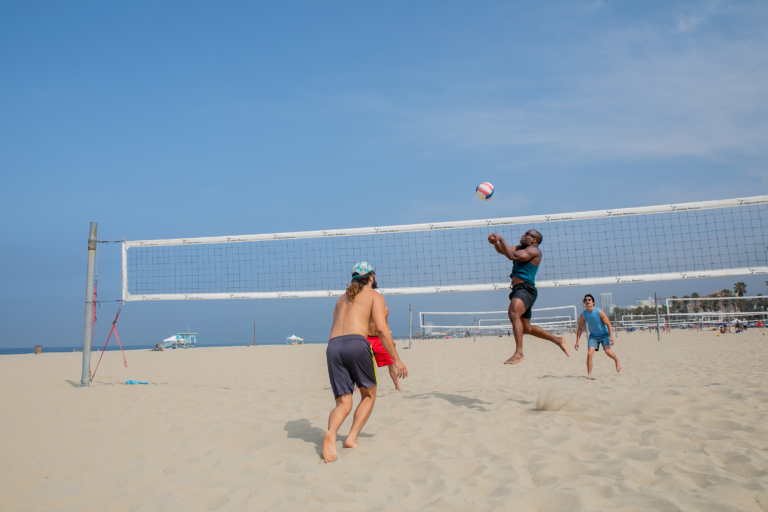General Rules of Marathon
If you think running a marathon is just about lacing up your sneakers and hitting the pavement, think again. There are a multitude of rules and regulations that govern every aspect of these grueling races. From registration requirements to disqualification reasons, the guidelines are crafted to guarantee a fair and safe competition for all participants. But what exactly are these rules, and how do they impact your marathon experience? Let's explore the intricacies of marathon regulations and uncover what it takes to cross that finish line successfully.
Race Registration Requirements
To participate in a marathon, you must meet specific registration requirements. Let's take a closer look at what it takes to get yourself signed up for this exhilarating event. Initially, age restrictions are a common factor in marathon registrations. Most marathons require participants to be at least 18 years old on race day. This guarantees that runners are physically prepared for the demanding nature of a marathon.
Moving on to the registration process, it typically involves filling out an online form with personal details, emergency contacts, and any medical conditions that organizers should be aware of. Some marathons also require participants to pick up their race packets in person, which can include their bib number, timing chip, and other important information.
Proof of qualification is another important aspect of registration for certain marathons. Events like Boston or New York City Marathon require runners to have achieved specific qualifying times in previous races to be eligible to register. This guarantees that participants have the necessary experience to handle the intensity of these prestigious events.
Lastly, entry fees are a standard part of registration. These fees can vary depending on the marathon, with some larger events charging higher fees due to increased amenities and services provided to participants. Make sure to budget for this cost when planning to register for a marathon.
Participant Eligibility Criteria
Meeting specific criteria is essential for individuals wishing to participate in a marathon event. Participant age is a critical factor in determining eligibility. Most marathons have a minimum age requirement, often ranging from 18 to 21 years old. This age restriction guarantees that participants have the physical maturity and endurance necessary to complete the grueling 26.2-mile race. On the other end of the spectrum, there is typically no maximum age limit, emphasizing inclusivity and encouraging individuals of all ages to take part in the marathon experience.
Another key aspect of participant eligibility is training experience. While some marathons welcome first-time runners, others may require participants to have completed a certain number of races or demonstrate a level of training and preparedness. Training experience helps guarantee that participants have the stamina and fitness levels needed to safely complete the marathon. It is essential for participants to gradually build up their mileage, incorporate cross-training, and follow a structured training plan to prevent injuries and perform their best on race day.
Course Safety Guidelines
Ready to tackle the marathon course safely? When it comes to ensuring a secure environment for all participants, following course safety guidelines is paramount. Here are some key points to keep in mind:
- Emergency Response: Familiarize yourself with the emergency response plan for the event. Know where the medical stations are located along the course and how to access help if needed.
- Stay Hydrated: Proper hydration is essential for your safety during a marathon. Make use of the water stations provided and listen to your body's signals to avoid dehydration.
- Follow Instructions: Pay attention to any safety precautions communicated by race officials. These instructions are designed to keep you and your fellow runners safe throughout the event.
- Mind Your Surroundings: Stay aware of your surroundings at all times. Be mindful of other runners, course conditions, and any potential hazards that may arise.
Aid Station Protocol
When approaching aid stations during a marathon, understanding the protocol for receiving assistance can greatly impact your race experience and performance. Aid stations are essential pit stops that can make or break your marathon. Here are some key tips on aid station protocol that can help you navigate them effectively:
| Aid Station Protocol | Tips for Success | |
|---|---|---|
| Hydration Strategies | Sip fluids regularly | Use sports drinks for electrolytes |
| Aid Station Etiquette | Move to the side after grabbing supplies | Thank volunteers graciously |
| Nutrition Planning | Stick to your plan | Avoid trying new foods on race day |
| Fueling Techniques | Consume gels or chews every 45-60 minutes | Practice your fueling strategy in training |
Hydration strategies are important during a marathon. Sip fluids regularly to avoid dehydration, and consider using sports drinks for added electrolytes. When at an aid station, remember aid station etiquette – grab what you need and move to the side to allow others access. Always thank the volunteers who are there to support you.
Nutrition planning is key. Stick to the nutrition plan you trained with and avoid trying new foods on race day. Fueling techniques are also important. Consume gels or chews every 45-60 minutes to maintain your energy levels. Practice your fueling strategy in training to ensure it works for you on race day.
Timing and Chip Placement
As you continue your marathon journey, a critical aspect considering is the timing of your race and the placement of your chip. Chip timing accuracy at the start line can make a significant difference in measuring your performance. Ensuring your chip is correctly placed on your shoe is vital for accurate tracking until you cross the finish line.
Markdown bullet list:
- Chip Timing Accuracy: Proper chip placement and synchronization at the start line is essential for precise tracking of your running time.
- Start Line Placement: Make sure your chip is securely fastened on your shoe, following the event's guidelines, to avoid any timing discrepancies.
- Placement on Shoe: The chip should be placed on the top of your shoe, securely tied to prevent it from falling off during the race.
- Finish Line Accuracy: As you approach the finish line, ensure you maintain your pace to get the most accurate timing results.
Taking care of the details with chip placement on your shoe and understanding how essential timing accuracy is from the start line to the finish line can help you track your progress effectively. Embracing these timing and chip placement rules will give you the confidence to focus on your marathon journey without worrying about inaccurate timing data.
Bib Number Placement Rules
When it comes to the marathon, your bib number placement is key for smooth operations. Ensuring your bib number display follows guidelines, attaching it properly, and optimizing visibility are critical points to focus on. These factors can make a significant difference in your race experience and organizers' ability to track and support participants effectively.
Bib Number Display
Placing your bib number correctly is important for ensuring accurate tracking and identification during the marathon. To make the most of this essential element, consider the following tips:
- Bib number visibility: Guarantee your bib is clearly visible on the front of your torso.
- Participant identification: The bib helps race organizers identify you, so make sure it's not obscured.
- Bib display: Pin the bib on your outermost layer to prevent it from being covered during the race.
- Race organization: Following bib placement rules helps the event run smoothly and efficiently.
Proper Attachment Guidelines
To guarantee your bib number stays secure and visible throughout the marathon, it's important to adhere to specific guidelines for proper attachment. Ensuring attachment security is key for a hassle-free run. Before the race day, take time for equipment preparation. Here's a table highlighting key attachment guidelines:
| Attachment Method | Description | Benefits |
|---|---|---|
| Safety Pins | Secure corners of bib to shirt | Simple and widely available |
| Race Belt | Attach bib using adjustable belt | Comfortable and reusable |
| Magnets | Magnetically attach bib to shirt | Quick application |
Visibility Recommendations
For best visibility during the marathon, how you position your bib number is important for race officials and photographers to identify you accurately. When considering where to place your bib, keep in mind the following recommendations:
- Reflective Gear: In low light conditions or when running at night, reflective gear can help enhance your visibility to those around you.
- Weather Conditions: Be mindful of any weather conditions that could affect the visibility of your bib number, such as rain or fog.
- Hydration Stations: Make sure your bib is placed in a way that won't interfere with accessing hydration stations along the route.
- Medical Assistance: Position your bib where it can be easily seen by medical personnel in case you need assistance during the race.
Following these guidelines will not only help race officials and photographers but also guarantee your safety and well-being during the marathon.
Disqualification Reasons
Alright, let's talk about the POINTS. These are important reasons that could lead to disqualification in a marathon. Make sure to pay close attention to these disqualification reasons to guarantee a successful race day.
Reasons for Disqualification
Reasons you may face disqualification during a marathon include not following the designated course, receiving assistance from unauthorized individuals, or failing to meet specific time cutoffs. Remember, the importance of the race is vital for all participants. Here are some key points to avoid disqualification:
- Late Arrival: Starting the race after the designated time can lead to disqualification.
- Improper Attire: Wearing inappropriate clothing or gear may result in consequences.
- Outside Assistance: Receiving help from individuals not authorized by the race officials is against the rules.
- Course Cutting: Skipping sections of the course to gain an unfair advantage is strictly prohibited.
Stay focused, follow the rules, and enjoy the marathon experience while respecting the guidelines set for all participants.
Violation of Race Rules
To secure your participation in the marathon is not jeopardized, it is important to understand the specific rules that, if violated, may lead to disqualification. Rule enforcement is taken seriously to guarantee fair play and sportsmanship among all participants. Violations such as taking shortcuts, accepting aid from unauthorized sources, or not following the designated course can result in disqualification. It's essential to respect the guidelines set by the race organizers to maintain the integrity of the marathon. Consequences for breaking these rules can range from warnings to outright disqualification, depending on the severity of the infraction. By adhering to the race rules and displaying good sportsmanship, you contribute to creating a positive and equitable environment for all runners.
Frequently Asked Questions
What Are Some Common Pre-Race Nutrition Tips for Marathon Runners?
To fuel your marathon success, remember carb loading is crucial. Focus on complex carbs like whole grains. Hydration strategies are essential too. Start sipping water early and consider electrolyte drinks for balance. Good luck!
How Should Runners Prepare for Running in Different Weather Conditions During a Marathon?
When preparing for different weather conditions in a marathon, layering clothing is key. Stay hydrated with smart electrolyte balance. Choose gear wisely. These strategies will help you adapt and perform your best on race day.
Are There Any Specific Training Strategies That Can Help Improve Marathon Performance?
To boost your marathon performance, incorporate interval and strength training to build endurance and power. Mental preparation, like visualization, and race day strategies, such as pacing, will set you up for success on the big day.
What Are Some Recommended Recovery Techniques for Marathon Runners Post-Race?
After crossing that finish line, it's time to focus on post-race recovery. Hydrate well, then grab that foam roller for some relief. Stretch out those tired muscles to prevent stiffness. Your body will thank you!
How Can Runners Prevent Common Injuries While Training for a Marathon?
To prevent common injuries while training for a marathon, focus on proper warm-ups, cool-downs, and stretching routines. Incorporate strength training to build muscle and improve joint stability. Listen to your body, rest when needed, and vary your running surfaces.






